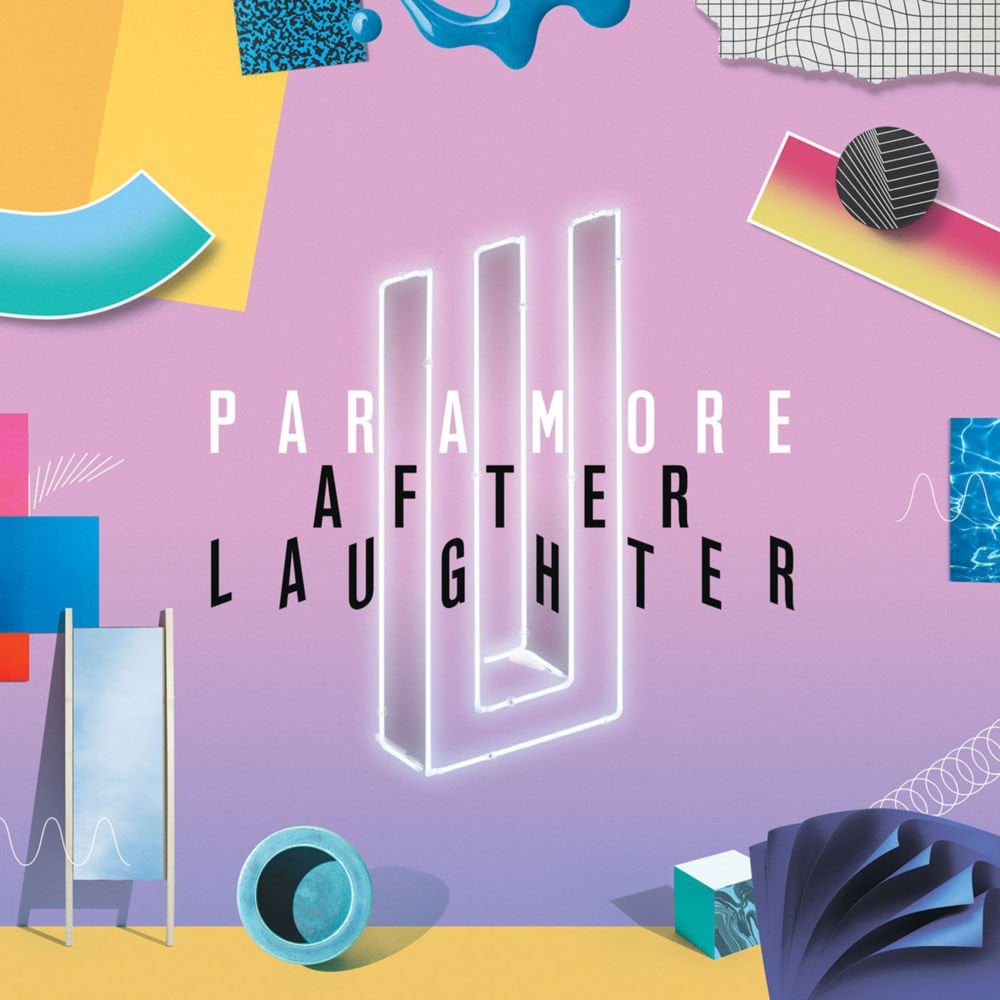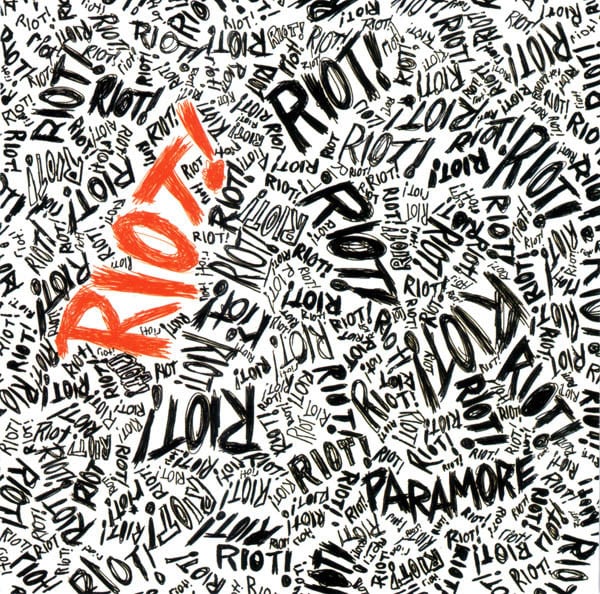‘RIOT!’ vs ‘After Laughter’: An Important Investigation Into Which Paramore Album Is Better
A lot has changed for Paramore in the last ten years.

We’re at a very interesting point in the career trajectory of Franklin’s finest and fiercest, Paramore. The chameleonic pop-rockers just recently released their fifth studio album, the acclaimed After Laughter; but 2017 also marks a full ten years since their breakthrough second LP, RIOT!, hit shelves.
A lot has changed in that decade – both for the band and for the music world and quote-unquote ‘scene’ that raised it – but which album holds up as the definitive Paramore record? DAVID JAMES YOUNG wrapped his ears around both to determine if Misery is still the Business or if their 2017 output gets the last Laugh.
RIOT! (2007)
BAND PERSONNEL
Hayley Williams on vocals, Jeremy Davis on bass and the Farro brothers – Josh and Zac – on guitars and drums, respectively. Davis briefly left for a spell during the recording of the band’s debut LP, 2005’s All We Know is Falling, but would return later in the year and play on every Paramore release up to their self-titled 2013 album. Guitarist Jason Bynum, who played on Falling, would leave the band prior to RIOT! being recorded.
PRODUCER
David Bendeth; an acclaimed British producer with 40 years of experience and over 100 albums to his name. Some of the bigger names Bendeth has worked with include Taking Back Sunday, Underoath, Vertical Horizon and All Time Low. In a weirdly-coincidental moment, one of the other albums that Bendeth produced that year was Southern Weather, the debut solo album by Underoath drummer Aaron Gillespie under the moniker The Almost. Gillespie would go on to be one of several drummers to fill the throne in-between Zac Farro’s spells in the fold of the band.
LEAD SINGLE
Widely considered to be the band’s signature song, ‘Misery Business’ is pop-punk through a post-hardcore lens – one of the crunchiest and most belligerent mainstream pop hits of the 2000s. Its sugar-and-spice contrast, its red herring string sample intro and its bowl-over chorus still serves as one of the most important displays of the band’s greatness a decade on.
OPENING TRACK
‘For a Pessimist, I’m Pretty Optimistic’ does a lot of things in its 3.5 minutes, but “fuck around” is not one of them. It immediately charges out of the gates, fuelling a twin guitar attack to fan the flames of Williams defiant teenage rage. “What did you think I would say?/No you can’t run away,” she sings; before belting out the damning “YOU WOULDN’T!” and getting toppled over by a Zac Farro drum fill.
There’s also something so incredibly brash and powerful about an 18-year-old woman mocking a jilted lover with “Why don’t you stand up/Be a man about it?” This is a song that absolutely and completely justifies the album’s all-caps and exclamation mark in the title.
CLOSING TRACK
There’s a line in ‘Born For This’ that directly references Swedish anarcho-punks Refused, but by the time this track rolls around it’s clear that the band is less concerned with the shape of punk to come and more with the shape of Paramore to come. In an over-crowded scene, Paramore shifted from being also-rans to a frontier band with the release of RIOT!.
Songs like ‘Born for This’ are indicative of why that is – they’re sharp, they’re feisty and they don’t back down. Consider that the chorus of this song is “Everybody sing/Like it’s the last song you will ever sing.” Then consider that, thinking bigger picture, this could easily be considered the alma mater of Paramore throughout their career. The genre semantics and personnel may have shifted across each release, but their unifier is the conviction and passion with which the songs are performed. It’s hard to fake it in this band – not that you would ever want to.
HIGHLIGHTS
Although its middle contains a comparative slump, RIOT! Is topped and tailed by songs that still stand up as some of Paramore’s all-time best moments. ‘That’s What You Get’ and “crushcrushcrush” are powerful and pragmatic pop songs; while ‘We Are Broken’ forges into the darker and more introspective side of the group that would later be mined for such gold as 2009’s ‘All I Wanted’ and 2013’s ‘Misguided Ghosts.’ When one notes just how young the band were, their focus and resilience in making this songs becomes all the more impressive.
SOUND
Although still very much classified as a pop-punk record and band at this point, there are clear indicators on this album that the band had loftier and grander ambitions than getting on Warped Tour again.
“There are clear indicators on this album that the band had loftier and grander ambitions than getting on Warped Tour again”
The mix of guitar tones, the more techincal focus on the drums and the flirtations with pop (‘crushcrushcrush’) and folk-rock (‘Fences’) show that there is room for growth – which would unquestionably come across the course of the next three albums.
With that said, there is plenty within the sound of the band at this time that works perfectly well on its own; not just with the context of what we know about the band now.

After Laughter (2017)
BAND PERSONNEL
Hayley Williams on vocals, keyboards and percussion; Taylor York on guitar, keyboards and percussion; and Zac Farro on drums, keyboards and… well, you know. Both the Farro brothers left the band in 2010 following some he-said-she-said drama; while York had been a part of the fold since the tour in support of RIOT!.
Jeremy Davis would follow suit in 2015, along with a different suit – of the law variety – arriving against the band not long after. After a few social media teases, Zac Farro was officially confirmed to be back in the band at the start of the year.
PRODUCER
As on Paramore, York co-produced the album with Justin Meldal-Johnsen. Best known for his tenure in Beck’s backing band as its bassist and musical director, the multi-instrumentalist and producer has also worked with Nine Inch Nails, Air and Gnarls Barkley in the same role. As a producer, Meldal-Johnsen has worked on albums by M83, Jimmy Eat World and Tegan and Sara; with his role in later-day Paramore exposing him to a whole new generation.
LEAD SINGLE
‘Hard Times’ arrived in the middle of April and immediately made an impression for its left-field approach to the Paramore sound – and, one could even argue, a dismantling of their fundamentals entirely to build up again from scratch. There’s a major percussive drive to the song – care of the returning Farro brother – and a really interesting mix of tones. The bright guitar and marimba serve as the light to Hayley’s dark and introspective lyrics – this is literally panic at the disco right here.
OPENING TRACK
As luck would have it, ‘Hard Times’ also opens After Laughter; and once that was made clear, its context within the record made a lot of sense. Sonically, it’s a very clear message that this isn’t going to be like any of the band’s previous records – either on an individual basis or as a collective discography. Paramore is a band, and Paramore is back in a big, bold way.
CLOSING TRACK
‘Tell Me How’ may be one of the most personal songs Williams has ever penned – especially considering a lot of it is primarily her alone, playing the piano. Her bandmates eventually join her, but it’s inherently clear from the outset that this is very clearly centred on her own battled demons and her interpersonal failures.
There might not be a more heartbreaking opening line in 2017 than “I can’t call you a stranger/But I can’t call you.” At least, you certainly wouldn’t want to hope that there would be. It’s about acceptance, about wrong-doings, about crossroads, about the past and the present dictating an uncertain future. “I can still believe,” Williams concludes as the song fades into ambience, and – ultimately – silence. Whatever she’s been through, you’re compelled as a listener to keep the faith.
HIGHLIGHTS
Although many listeners and longtime fans may have taken awhile to properly wrap their head around what the band are doing on After Laughter, the album’s best moments ensure that repeated listens are greatly rewarded.
‘Rose Coloured Boy; is an obvious single with its cheerleader hook and its shiny Nile Rodgers guitar shapes, while ‘Fake Happy’ is perhaps the most upbeat song about hiding your emotions you’re likely to encounter. There’s also the hypnotic and poetic ‘No Friend,’ which features mewithoutYou’s Aaron Weiss screaming beat poetry into a distorted microphone and completely eliminating the room of squares as Paramore continue to expand and experiment.
SOUND
After Laughter is Paramore’s most explorative and inventive album, taking its cues just as much from 80s new-wave as it does alt-rock and the avant-garde. It’s accessible and cleanly-produced without ever once eliciting a cry of sell-out – besides everything else, it’s an inaccurate spray against a band who’ve never been content with making the same LP twice.
The return of Farro means the drums are back in the driver’s seat, but neither Williams nor York’s vision is compromised by this. In fact, it may be even more enhanced – this trio may have a clearer comprehension of Paramore the band than any other line-up of Paramore before it.
The Verdict
RIOT! can still unquestionably hold its own as a landmark release of not only the band’s catalogue, but of the entire mall-emo craze of the 2000s. It didn’t just outgrow it – it outlived it.
That being said, there’s no doubt that After Laughter stands as the best Paramore album to date. It’s challenging, it’s demanding and it’s genuinely surprising even after several listens. RIOT! holds its own, but it can only extend so far. With After Laughter, there is more and more to learn about it every time you press play.
—
David James Young is a freelance writer, podcaster and Paramore fan. There’s no collective name for Paramore fans, and “Parawhore” is problematic. He tweets at @DJYwrites.


